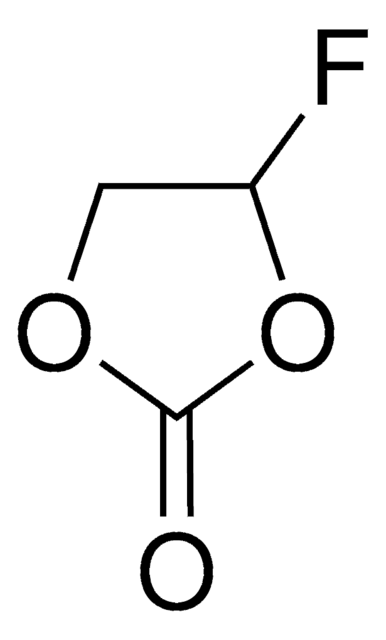GF40266682
Lithium
foil, not light tested, 38x500mm, thickness 0.20mm, as rolled, 99.9%
Sinonimo/i:
Lithium, LI000220
About This Item
Prodotti consigliati
Saggio
99.9%
Stato
foil
Produttore/marchio commerciale
Goodfellow 402-666-82
Resistività
9.446 μΩ-cm, 20°C
Misura × spessore
38x500 mm × 0.20 mm
P. ebollizione
1342 °C (lit.)
Punto di fusione
180 °C (lit.)
Densità
0.534 g/mL at 25 °C (lit.)
Stringa SMILE
[Li]
InChI
1S/Li
WHXSMMKQMYFTQS-UHFFFAOYSA-N
Cerchi prodotti simili? Visita Guida al confronto tra prodotti
Descrizione generale
Applicazioni
- A retrospective on lithium-ion batteries: This article reviews the contributions in the development of lithium-ion batteries, discussing inspirational insights to guide future breakthroughs in battery technology (J Xie, YC Lu, 2020).
- Guidelines and trends for next-generation rechargeable lithium and lithium-ion batteries: This review discusses the limitations of commercial lithium-ion batteries and explores the directions for next-generation batteries (F Wu, J Maier, Y Yu, 2020).
- Prospects for lithium-ion batteries and beyond—a 2030 vision: This article explores the future of lithium-ion batteries and discusses current strategies to improve these and next-generation battery technologies (CP Grey, DS Hall, 2020).
- Lithium brines: A global perspective: This study offers a global perspective on lithium brines, discussing the critical and technologically important roles of lithium, which is in increasing demand (LA Munk, SA Hynek, DC Bradley, D Boutt, K Labay, 2016).
Note legali
Codice della classe di stoccaggio
4.3 - Hazardous materials which set free flammable gases upon contact with water
Classe di pericolosità dell'acqua (WGK)
WGK 1
Punto d’infiammabilità (°F)
Not applicable
Punto d’infiammabilità (°C)
Not applicable
Scegli una delle versioni più recenti:
Certificati d'analisi (COA)
It looks like we've run into a problem, but you can still download Certificates of Analysis from our Documenti section.
Se ti serve aiuto, non esitare a contattarci Servizio Clienti
Possiedi già questo prodotto?
I documenti relativi ai prodotti acquistati recentemente sono disponibili nell’Archivio dei documenti.
Il team dei nostri ricercatori vanta grande esperienza in tutte le aree della ricerca quali Life Science, scienza dei materiali, sintesi chimica, cromatografia, discipline analitiche, ecc..
Contatta l'Assistenza Tecnica.


